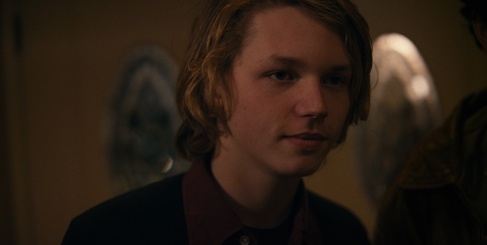
When Kevin Smith made his first film Clerks, he tapped into the zeitgeist, chronicling the story of two slackers. The reason it worked wasn’t because it was funny, which it was, nor was it because it showed technical prowess or visual mastery, which it didn’t. Clerks was a game-changing film for Smith because it tapped into a kind of story that was severely lacking from the cinema. For all their roughness, the characters spoke to something universal that we all seemed to know about life. It’s with a similar honesty that comedian turned director Mark Phinney brings us his directorial debut, FAT.
Now, I don’t mean to lump these two films together. First of all it’s important to note that FAT is not a comedy. It’s an unflinching story of a man dealing with his overeating and the way this affects his life, his relationships and friendships. With an incredible nuanced performance by Mel Rodriguez, FAT tells the story of Ken, an overweight man who refuses to change his lifestyle. So many movies play overweight characters for a cheap laugh, not so in FAT. The documentary style camera never strays from the tougher moments in the film. We watch as Ken faces the challenges of something as simple as getting ready in the morning, or attempting to sleep without the assistance of an oxygen mask. We agonize with the character as he spirals into self-loathing, stopping at several drive throughs over the course of the film. We root for him, feel his frustration and accept that, unlike most hollywood films, there is no easy answer to his complex problems.
For all of its brilliance and genuine emotion, it pains me to think that so few may see this film. It’s shot with all the subtlety of amateur home video. The footage stutters and smash zooms through each scene as if the DP had no idea what was going to happen. It’s hard to accept as an aesthetic and feels mismatched to the story being told. Luckily for Phinney, the film’s virtuosic lead performers soon make you forget about all of it, no small feat. I hope some distributor out there has the balls to take a risk and get this film out there. Obesity is an ever increasing part of our society and a film like this deserves, nay, needs to be seen by as much of the population as possible.
4.5/5








